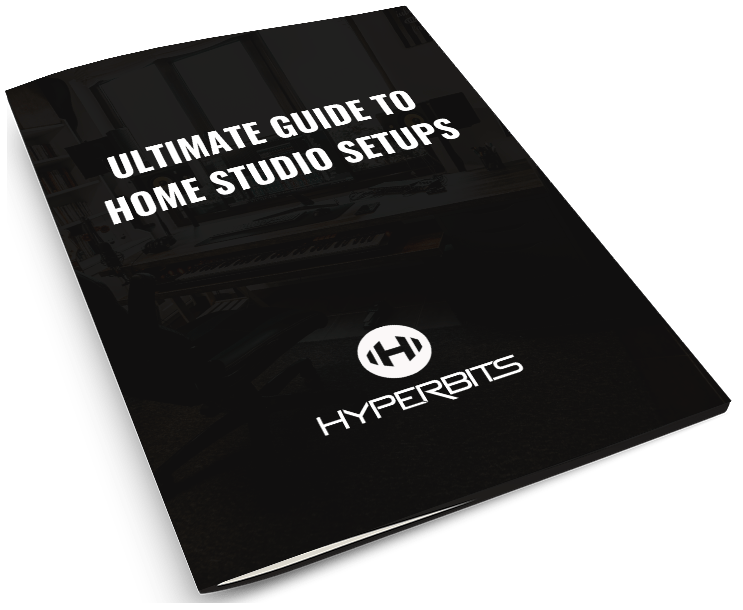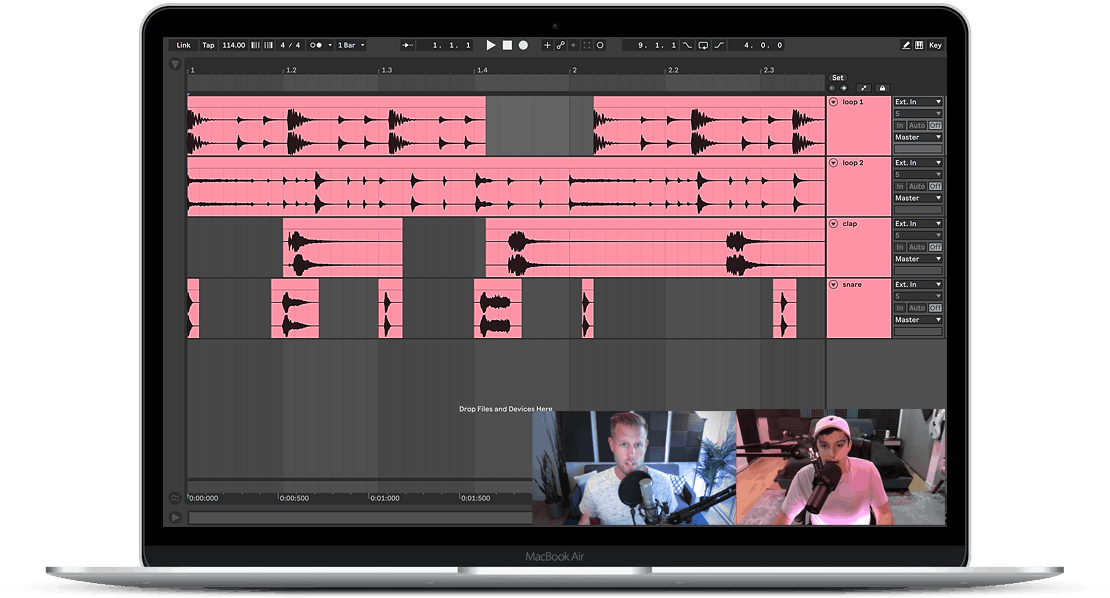The Best Chord Progression Charts to Help You Compose Better Music
“There, in the chords and melodies, is everything I want to say.”
— David Bowie
Chord progressions are the foundation of emotion and feeling in music. These patterns of note combinations produce a plethora of emotions, ranging from happiness and hope to melancholy and sadness. Chord progressions are the backbone of the message within every song.
But, it is challenging to write chord progressions. How do you narrow down which chord to start with? How do you know which one to put next? Should you make a three-chord progression, or should it be four chords or five?
Enter chord progression charts…
Chord progression charts are simple tools you can use to guide the creation of chords in your music. These charts come in various forms – they’ll help you not only pick the right chords for your song, but also guide you in arranging them in ways that maximize the emotion in your music.
In this article, I’m breaking down exactly what chord progressions and chord progression charts are. Plus, I’ve curated a list of my favorite chord progression charts on the internet that you can start using in your music today.
Let’s get started.
What is a chord progression?
A chord progression is a sequence of chords. These sequences tend to be pretty short, with most chord progressions only being three or four chords in a row. The most popular chord progressions have been used in thousands of songs, with the same chord progressions being responsible for countless hit records over the years.
In order to understand chord progressions, we need to understand two important concepts in music theory: keys and chords.
Keys
Without getting too technical, I want you to think of a musical key as a set of notes that sound good together. Some notes on your keyboard clash against each other — keys describe the combinations of notes that do sound good together.
In most cases, one song uses one key. Every key has a root note, which is the note that is used to name the key and is the “foundation” to the key itself. The simplest key is C Major, which is all the white keys on the keyboard – its root note is C.
Chords
All keys have associated chords. In its simplest form, a Major Chord is a combination of three notes, where the second note is 4 semitones (or keys on the keyboard) up from the first note, and the third note is 3 semitones up from the second note (and therefore 7 semitones up from the first note). For major chords, think: 0-4-3.
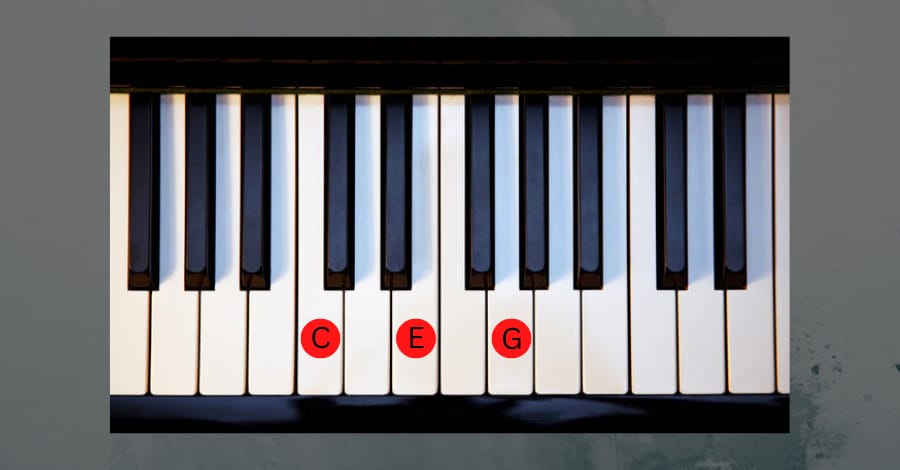
C Major
Minor Chords are very similar, but with one crucial difference. In minor chords, the second note is 3 semitones up from the first note, and the third note is 4 semitones up from the second note (and still 7 semitones up from the first note). For minor chords, think: 0-3-4.
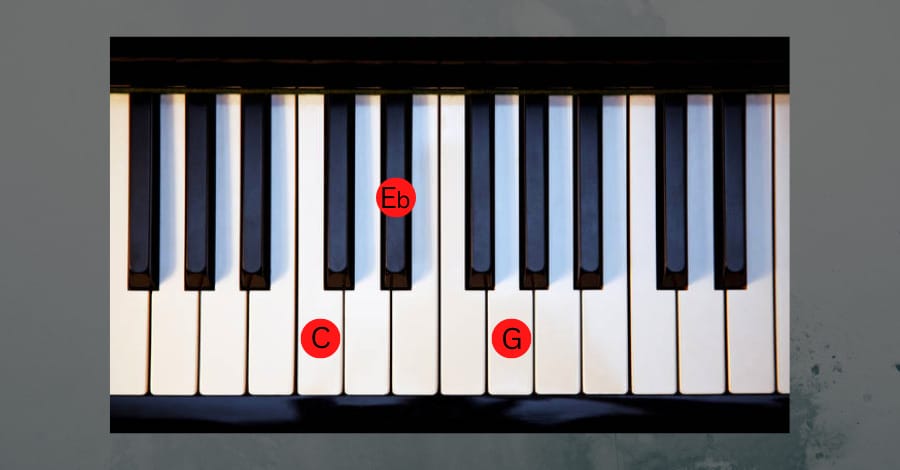
C Minor
Finally, Diminished Chords use a 0-3-3 pattern, where the second note is 3 semitones up from the first note and the third note is also 3 semitones up from the second note. This creates an unstable or tense feel to the chord, which can create a very dark and moody feel to the progression.
Diminished chords are less common than major and minor chords, but can be very effective when used correctly.
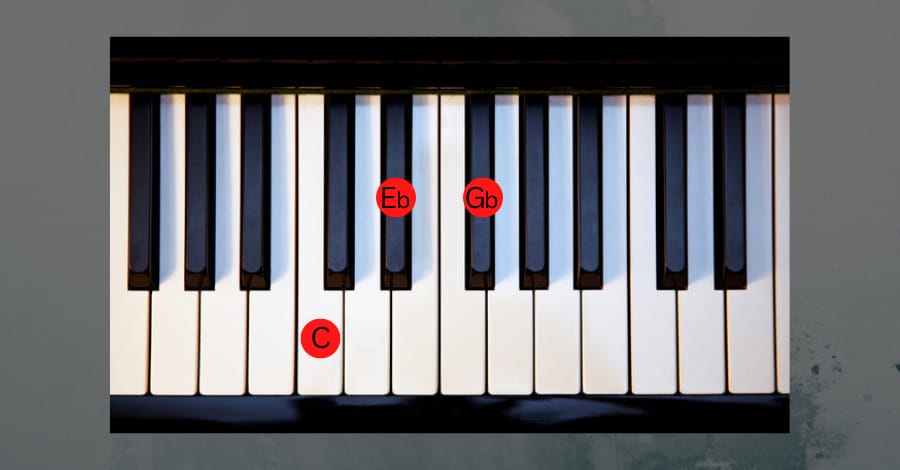
C Minor Diminished
There are many other types of chords, but I won’t talk about them here. I got much more in depth about chords and music theory in the Hyperbits Masterclass.
Chords within a Key
The key of C major has 7 notes in it: C-D-E-F-G-A-B. Using only these notes, and following our 0-4-3 and 0-3-4 patterns, we can create a list of chords that fall within the key. These chords – which are created using the notes in the key of C Major – are said to be chords in the key of C Major.
Any major or minor chord whose notes are in that list are chords in the key of C Major. For example:
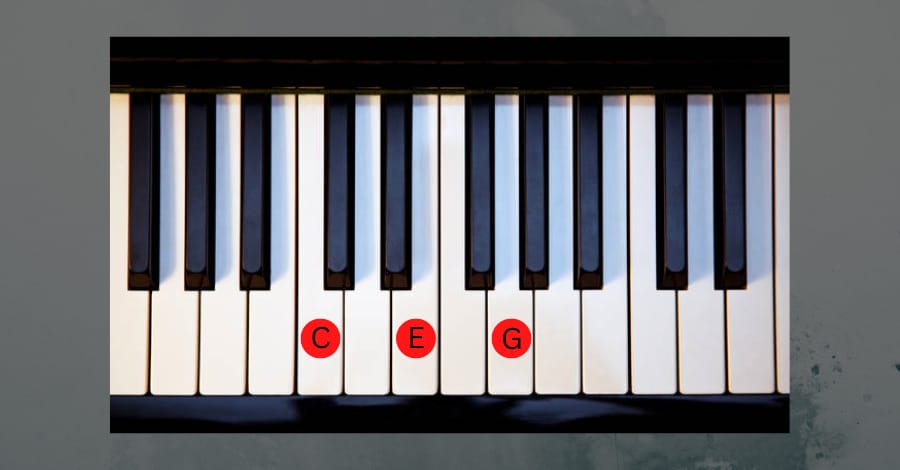
C Major – C - E(+4) - G(+3)
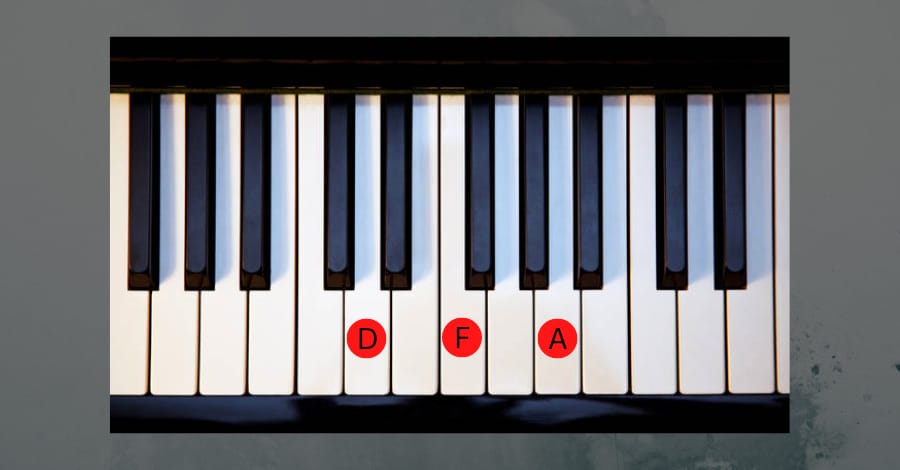
D Minor – D - F(+3) - A(+4)
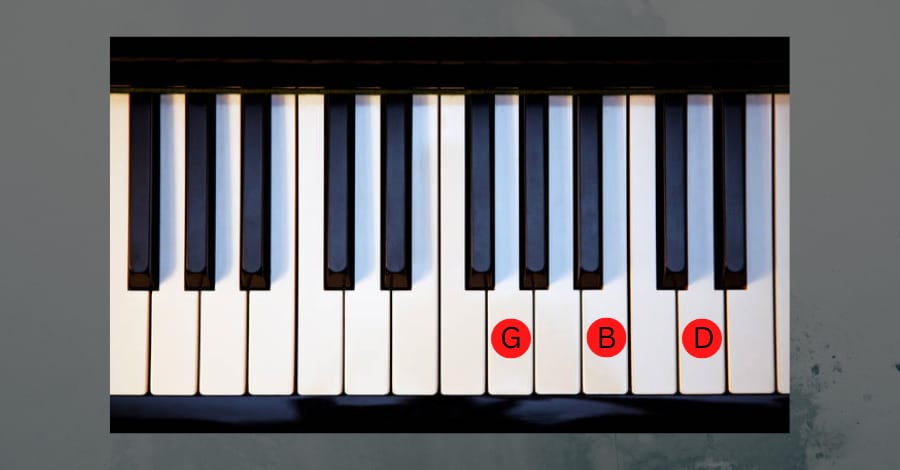
G Major – G - B(+4) - D(+3)
So, what is a chord progression? A chord progression is simply a series of chords, and they most often tend to be within the same key.
Reading Chord Progression Charts
Reading a chord progression chart is a two-step process. First, you need to know what key you are working in. Below is a great video to help you easily identify the key of your song:
Once you know your key, chord progression charts use a roman numeral system to indicate a certain chord within that key. These roman numerals map onto chords within the key based on the order of the root notes of the chords.
Let’s take the key of C Major. Starting with the note C, the first chord in the key is the C Major chord:
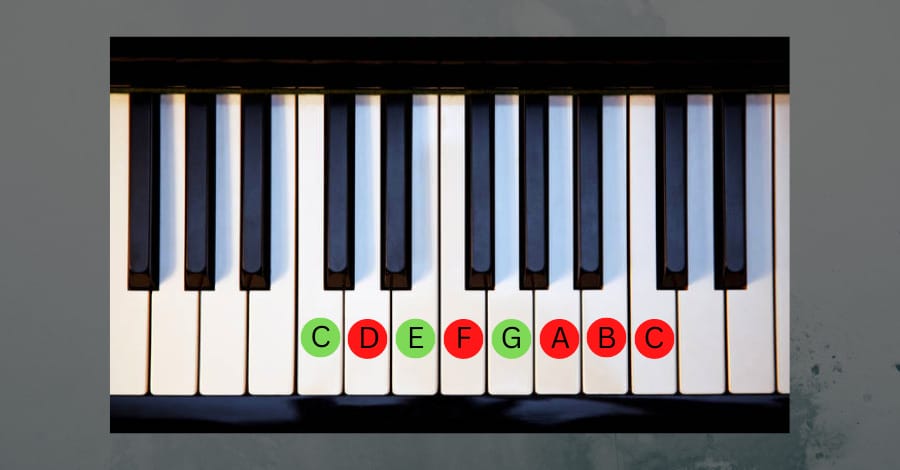
I: C-E-G
The next note up the scale in the key of C Major is D. Starting from D, we make a chord where all the notes are within the key of C Major (remember, all the white keys). That chord is D Minor:
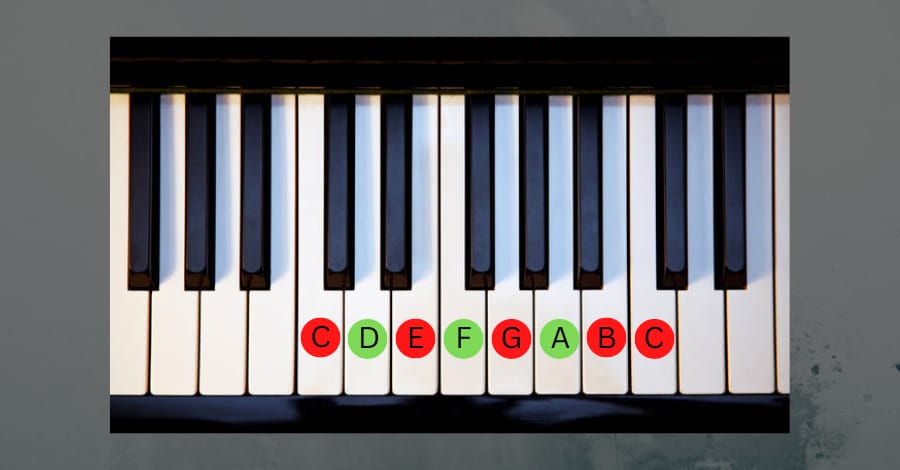
II: D-F-A
The next note up the scale is E. Following the same process, we make a chord where all the notes again are in the key: E Minor.
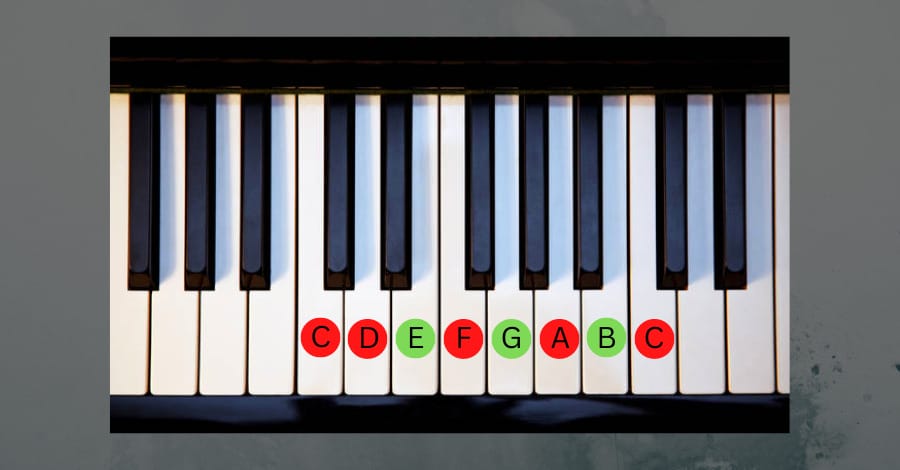
III: E-G-B
This process repeats until we return all the way to C. In the end, we have a list of seven chords based on their root notes, where all the chords are in the key of C Major.
A chord progression chart might give us the following sequence of roman numerals: I-IV-V. This indicates that we use the first, fourth, and fifth chords available in our key. In other words, these are the chords whose root notes are the first, fourth, and fifth notes in the key.
In C Major, this is: C Major - F Major - G Major. Or we could pick a different key, let’s say G Minor. The same I-IV-V chord progression would be: G Minor – C Minor - D Minor.
That is the entire process of reading chord progression charts! There are four main designs of chord progression charts which I will detail below. But once you understand the roman numeral system of chords, you will be able to use any chord progression chart you ever find.
The Best Chord Progression Charts
1) Common Chord Progressions
These are the most common style of chord progression charts. These charts list common sequences of chords – indicated by roman numerals – that you can immediately apply to any song. These progressions are tried and tested in tons of songs.
If this is your first time using a chord progression chart, I recommend starting here to create a great progression.
Major Keys:
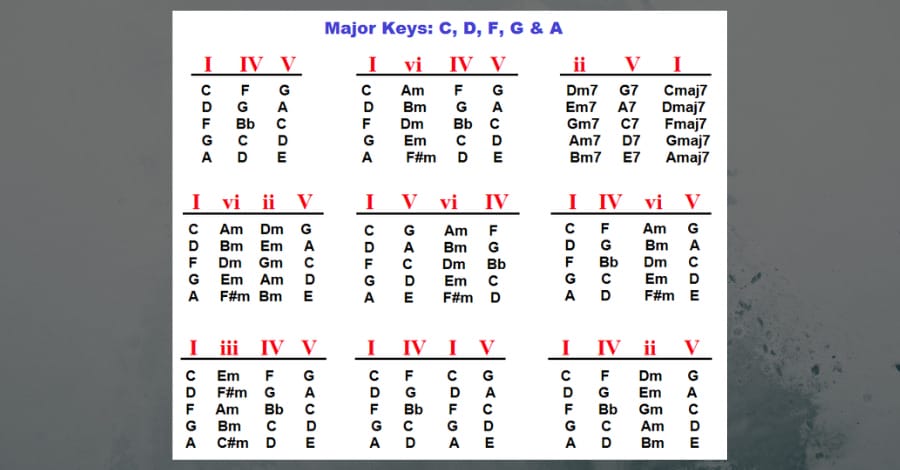
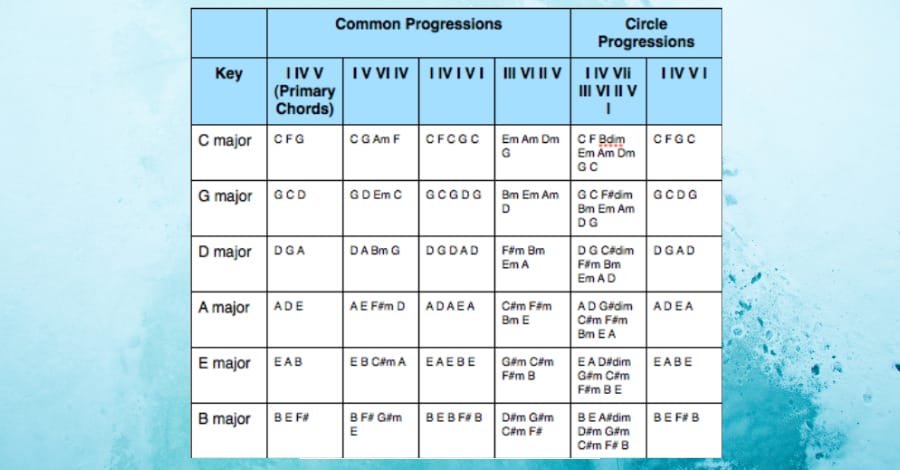

Minor Keys:


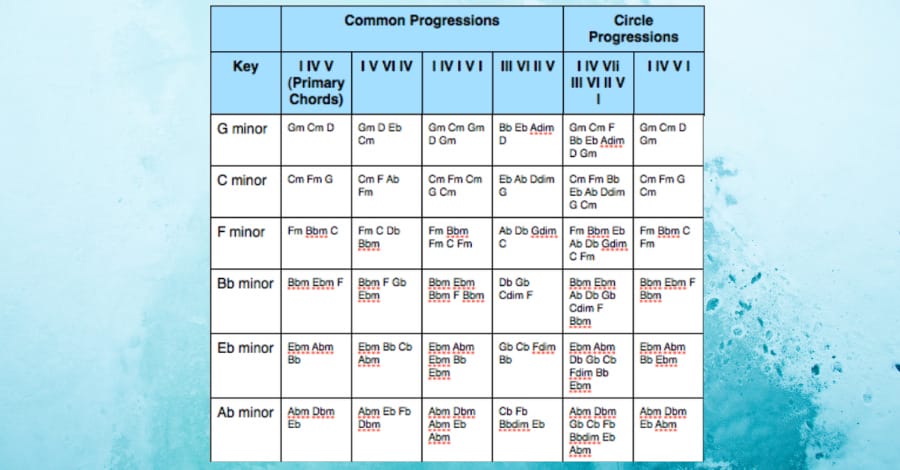
2) Chords By Key
Let’s say you’ve created a great progression using one of the charts above, but you just want to make it a little more unique. This style of chord progression chart lists out all the chords that you have available in a key. Use these charts to help you swap in a new chord from your key to create a whole new feel to your progression.
Major Keys:
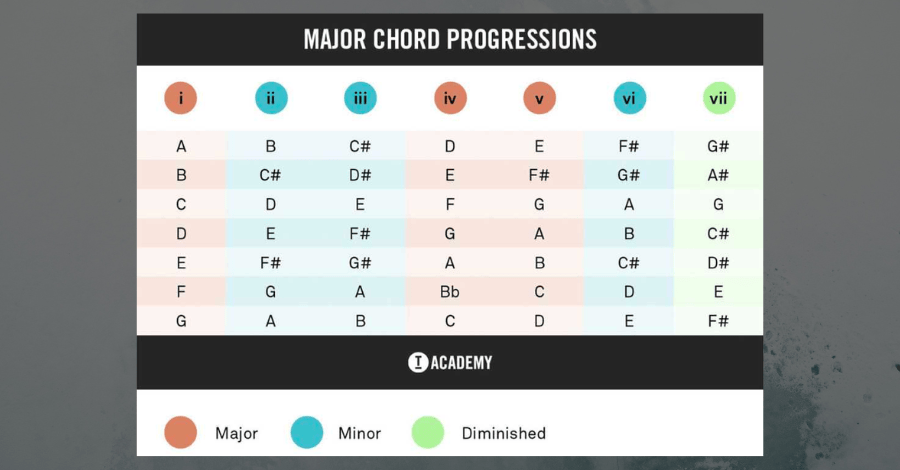
Minor Keys:
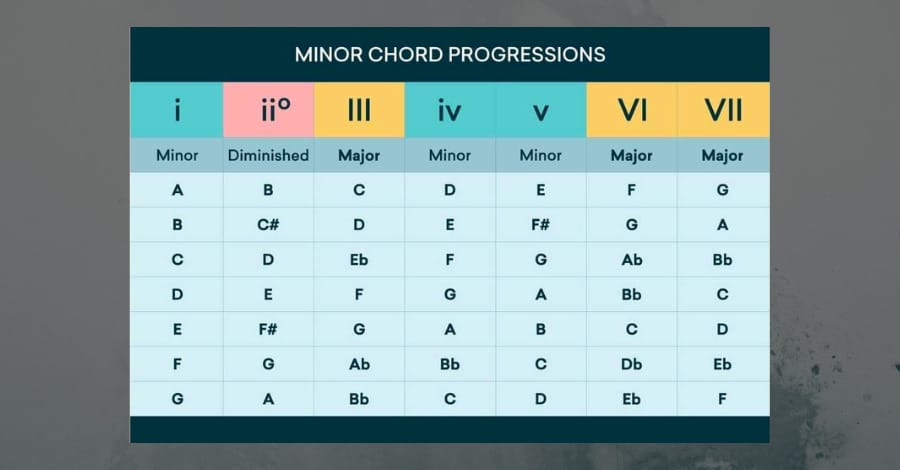
3) Chords By Root Note
Another way to add uniqueness to your progression is to swap out a single chord for another chord with the same root note. Be careful though, because not every chord with the same root note is also in your key: for example, the chord C Minor is not in the key of C Major (because C Minor contains a Eb note). Some chords though, like a C add9, sound beautiful when replacing a C Major.

Piano Roll Version
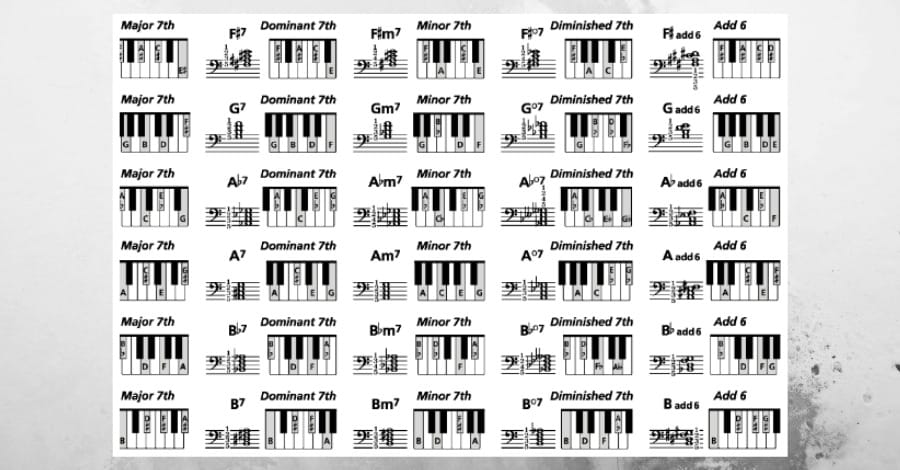
Piano Roll And Sheet Music Version

Piano Roll And Sheet Music Version
4) Chord Flow Charts
Feeling especially creative? Follow one of these flow charts to make your own progression from scratch. These charts will guide you to a curated list of “next possible chords” for your progression and are once again organized by roman numerals. For example, if your current chord is IV, these charts might indicate that II or V is a good choice for the following chord.
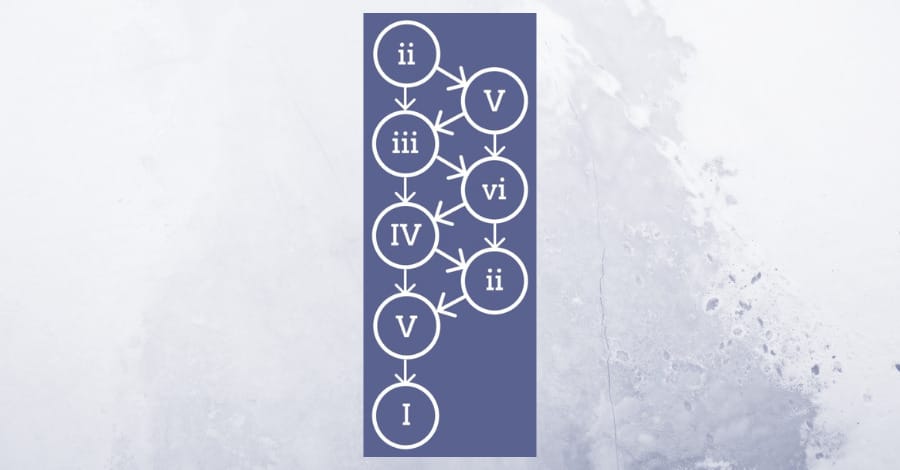
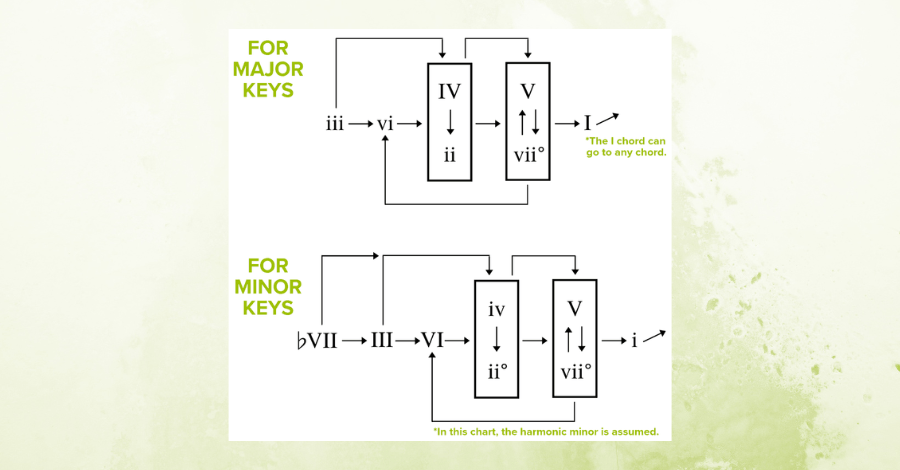
Final Thoughts
What is music if not a way to convey emotion? Chord progressions are the foundation of emotion in your music. The chord progression charts in this article will help you select effective chord progressions that will make your music, well, more “musical”.
And remember, don’t overthink it. Chord progressions are simple, and the same ones have been used on countless huge songs. You don’t need to reinvent the wheel here – use these chord progression charts, and I guarantee you’ll be able to add more emotion into your music.
These Might Also Interest You:
How To Write A Song: A Producer's Guide







